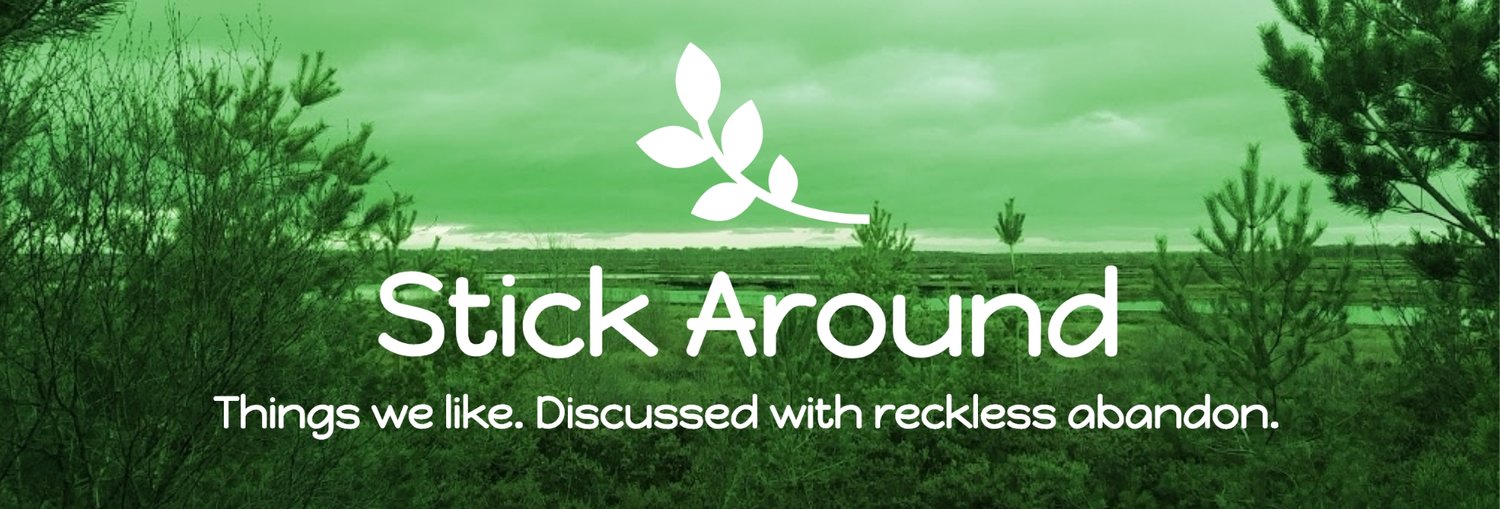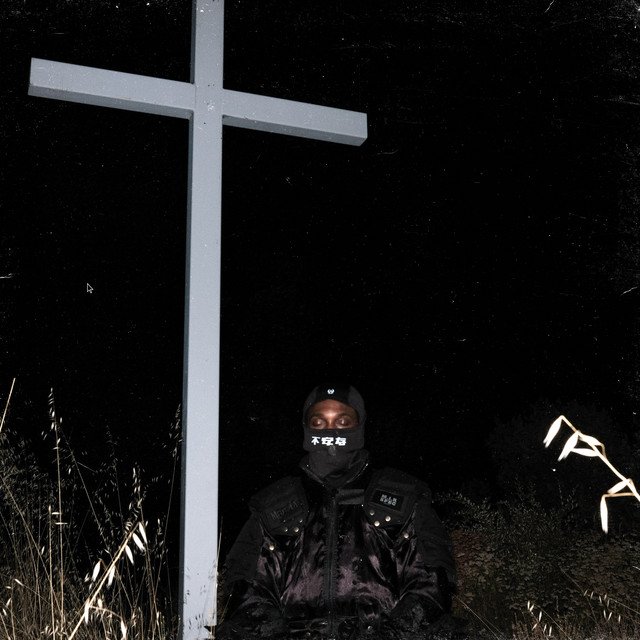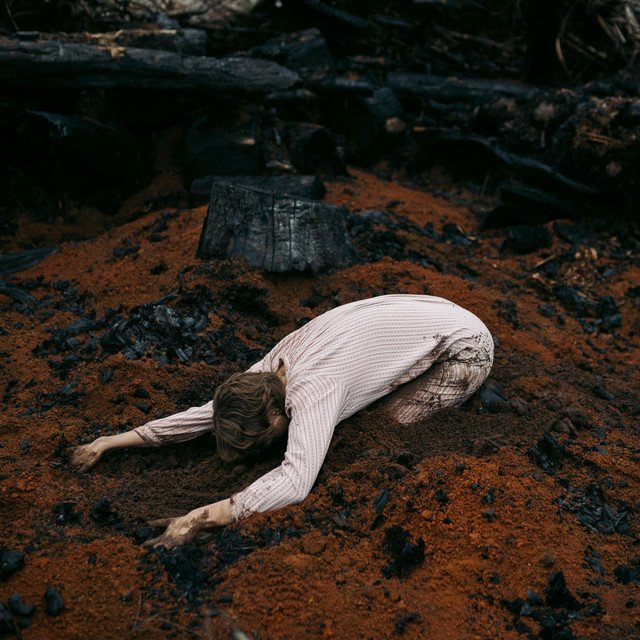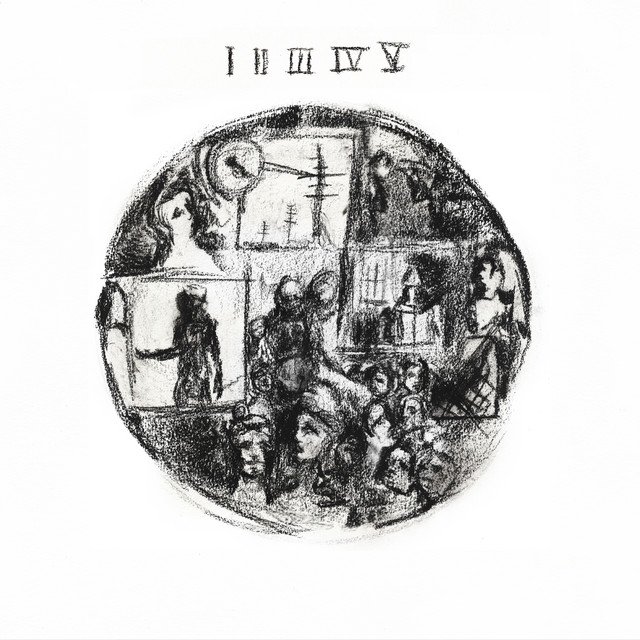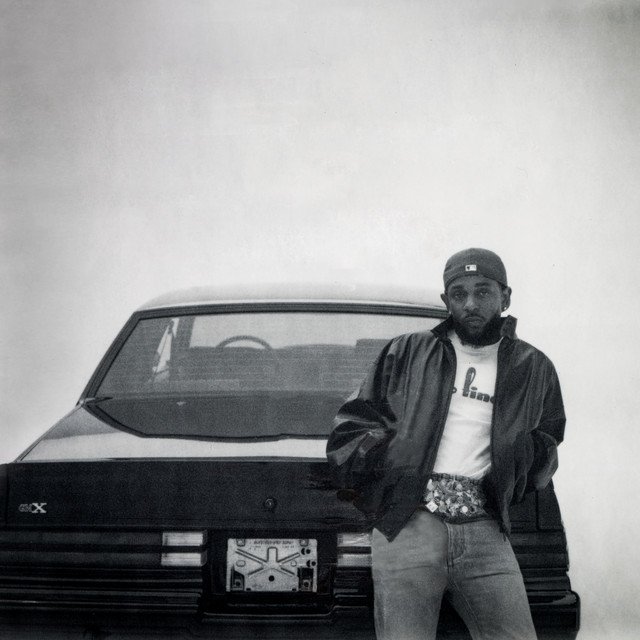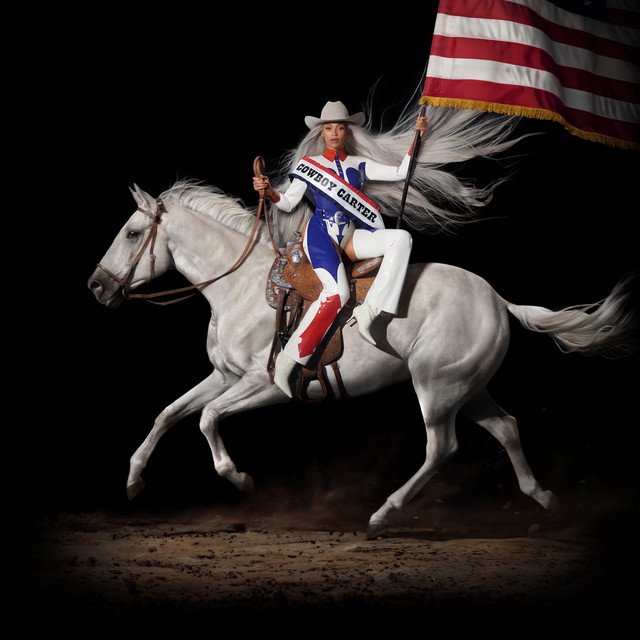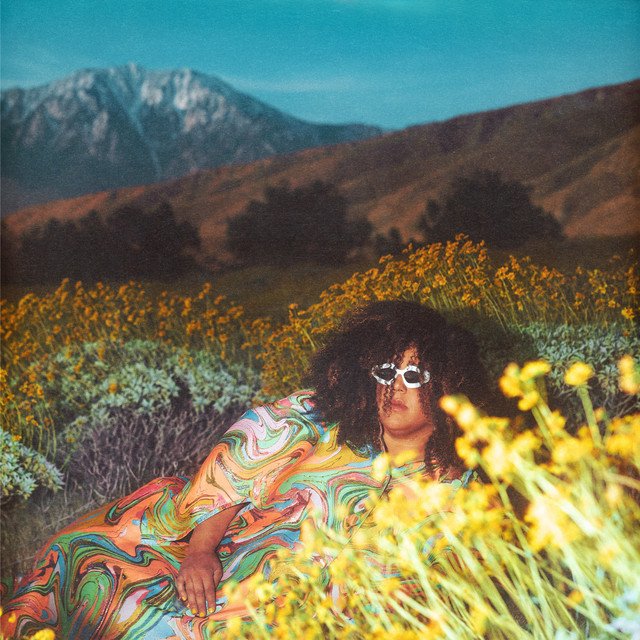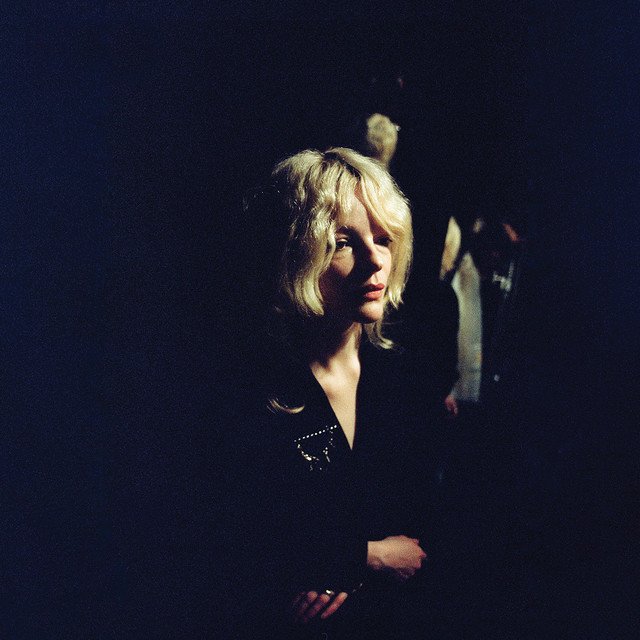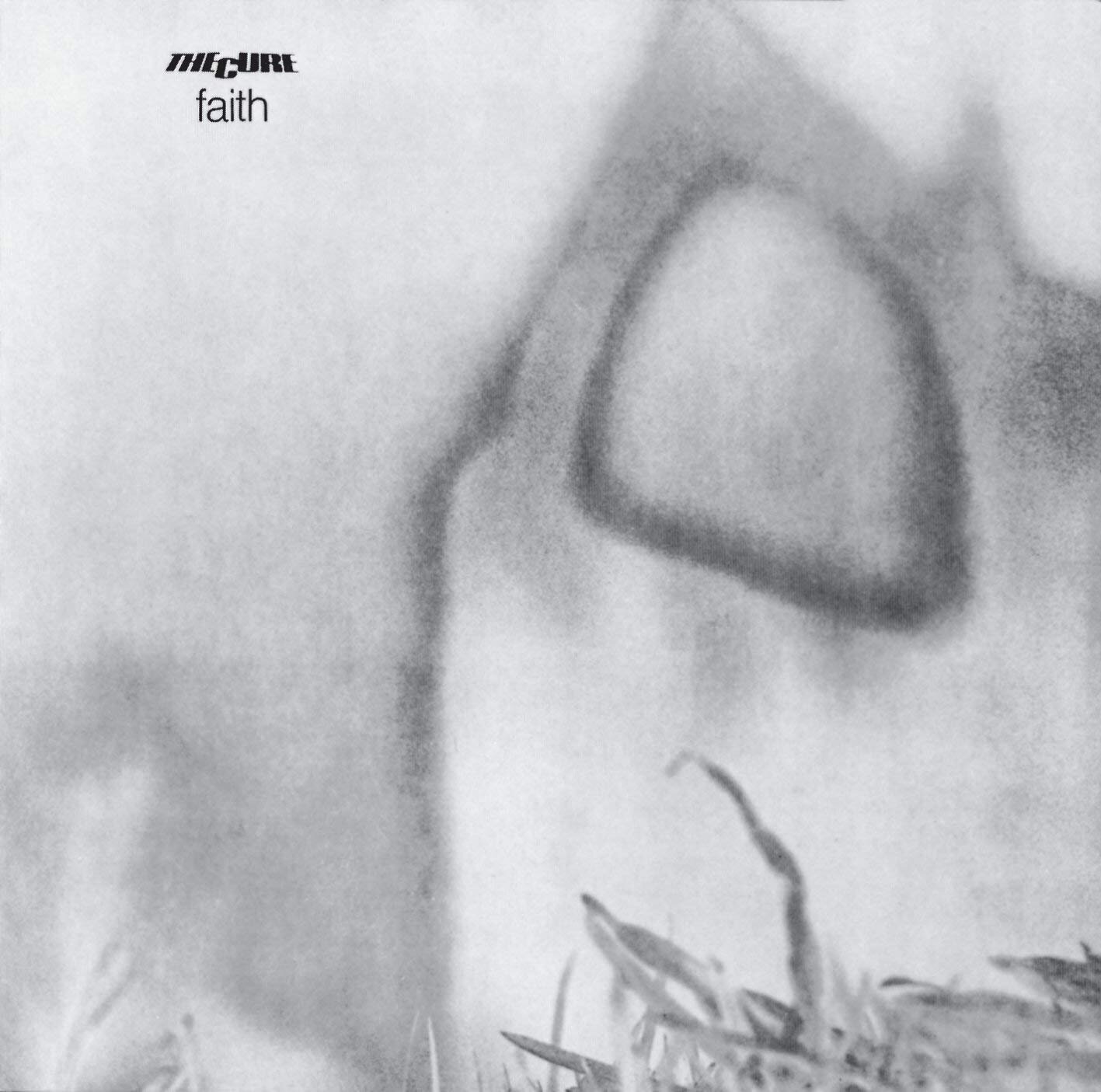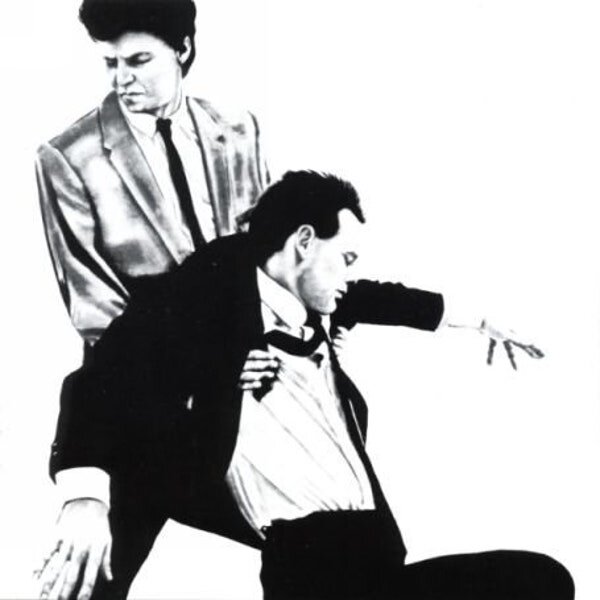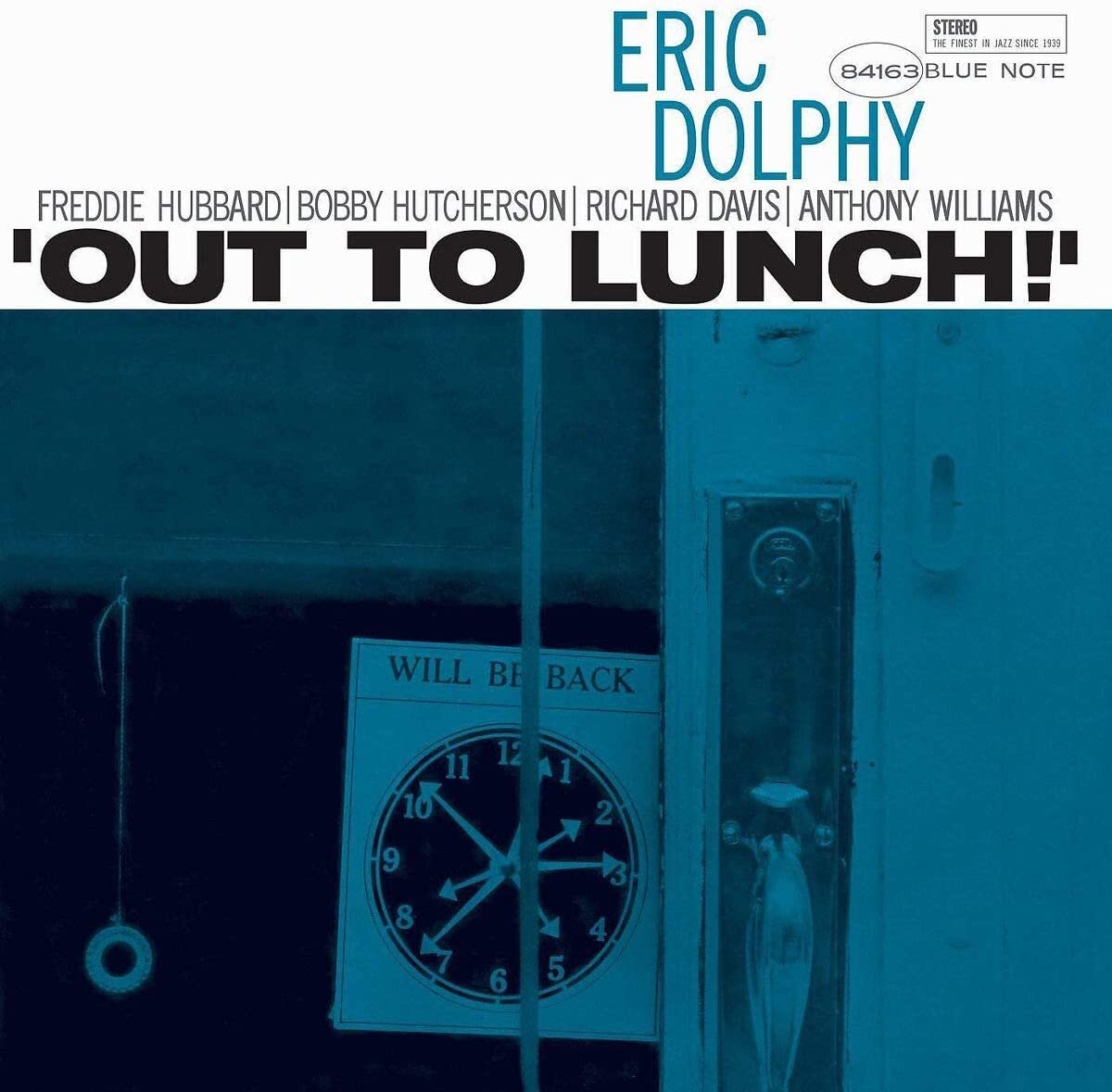2024 - Clive's Top Albums of Every Year Challenge
So, as I try to keep up with the present while writing about my favourite albums of every year from 1960, here’s my list of a whole bunch of albums from 2024. Over the past few months I’ve listened to all of Pitchfork’s ‘Best New Music’, the top 10-15 or so at rateyourmusic.com, Anthony Fantano’s top 10, and some other stuff, hence why this list is rather long. I also moved house, and welcomed my second son over the same period, so time has been very limited! On that note, there are no song picks for some of these albums, this is generally nothing to do with the albums, and everything to do with a lack of time while I was writing that particular review.
To save all your data plans and scrolling thumbs, I’ll only give the top 20 the honour of having their album art posted here. But anyway, let’s get going:
The ‘didn’t do it for me’ list
Before we get into the list, here’s a few that didn’t massively do it for me, and so despite their reception elsewhere haven’t made my list:
Empress Of : For Your Consideration - ‘One night stand - the album.’ And not a particularly memorable one.
Kali Malone: All life Alone - Creepy, a bit too churchy, dunno.
Still House Plants: If I Don't Make it I Love U: Very inventive, but sounds kind of like the vocals and instrumentation for two separate songs plonked together in a way that doesn't match up. It's deliberate, and no doubt difficult, but I just didn't enjoy it that much.
Vampire Weekend - God Was Above Us - I must have undergone some traumatic event while listening to the band’s vocals at some point, as somehow they just make me feel unpleasant. Unfair, but I couldn’t get into this.
Chief Keef - Almighty So 2 - Was all a bit much, probably my mood at the time...
And now, finally, onto the actual list. There’s 50 albums on it, so let’s get cracking.
50. JUS - 3rd Shift
Love the production and beats, but the lyrics are doing very little for me.
6/10
49. DORIS - Ultimate Love Songs
One of those 'song snippets' albums with songs never over a minute long. I like what it's doing and it's a fun listen, I'm just a little over the auto-tuned spoken style which seems very popular this year.
6/10
48. Yaya Bey - Ten Fold
Like a silky smooth luxury hot chocolate in the dim light of the small lamp in the corner. But, much like that comfortable blanket, it doesn’t leave much of a mark.
Song Picks: crying through my teeth
6.5/10
47. Starchris - Body Meat
I feel like it does some really interesting stuff as it approaches its end, but begins by just sounding like decent but unremarkable auto-tune-math pop.
Song Picks: Obu No Seirei
6.5/10
46. Schoolboy Q - Blue Lips
Schoolboy Q’s sixth album was one for the ‘very enjoyable’ pile. Just a solid rap album, with some filthy grinding bass.
6.5/10
45. Bladee - Cold Visions
Swedish rapper Bladee’s seventh album is essentially an album of those 16th note, half-time songs that usually make up a couple of tracks on your average rap album. In going in so hard on a very specific style you focus more on the intricacies: Bladee’s sad auto-tuned melodies, the atmosphere, the words. None of those quite do enough, and it’s a little too bloated for me to rate it more highly, but there’s some real gold in there.
Song Picks: FLATLINE, Terrible Excellence
6.5/10
44. Sumac - The Healer
Atmospheric, sparse, epic, downright filthy, but a bit roary for my tastes, if roaring metal music is your bag, I’d highly recommend.
Song Picks: World of Light
7/10
43. Jeff Barker & ETA IVtet - The Way Out of Easy
I have to say the repetitive, aggressive bass-line of the opening track got to me after a while, but other than that I really loved this hypnotic jazz album. It has a nice raw, band feel, and some great expressive playing.
7/10
42. The Smile - Wall of Eyes
It sounds luxurious, with innovative and compelling production, but it doesn’t massively go anywhere until the explosive Bending Hectic. It meanders beautifully, but - probably due to the amount of music I’m getting through for 2024 - I’m feeling the need for more focus.
Song Picks: Bending Hectic
7/10
41. Ulcerate - Cutting the Throat of God
ROOAARR. A thoroughly rollocking listen.
7/10
40. Nala Sinephro - Endlessness
Jazzy, pleasant, futuristic but with an eye to the past, much like her debut, but somehow less captivating.
7/10
39. The Cure - Songs of a Lost World
A slow, dramatic descent into apathy. A good comeback.
Song Picks: Alone, Endsong, And Nothing is Forever
7/10
38. Johnny Blue Skies - Passage du Desir
Just bloody good country folk. Nothing groundbreaking, but it does feature plenty of lead guitar noodling, which has gone somewhat out of fashion, but I very much welcomed.
7.5/10
37. Kim Gordon - The Collective
Kim Gordon’s second solo album is a distorted, industrial, shouted list of modern life where the bass is so high it’s shattering against the noise ceiling and fuzzing out across it. The Collective is that feeling of picking up a phone and being pissed off that you just spent 20 minutes taking in inane shite. It’s the realisation that tech is working against you, and it’ll exploit your psychology for ‘engagement’ - for your time is another man’s money. “Fuck you” you scream, in a manner reminiscent of the angrier passages on the album - but it’s a battle you’re doomed to loose.
Song Picks: BYE BYE, The Candy House, Psychadelic Orgasm
7.5/10
36. Kali Uchis - Orquideas
Uchis’ fourth album is an enjoyable, exciting and sumptuous sounding blend of Spanish and English, both in linguistic and musical terms. A refreshing stylistically free pop release that features a bunch of addictive hooks, but also keeps things interesting and colourful on the production front.
Song Picks: Me Pongo Loca, Heladito,
7.5/10
35. MJ Lendermann - Manning Fireworks
Great, catchy alt-country reminiscent of Spider Bags.
7.5/10
34. Los Campesinos - All Hell
It feels at times like they're trying a little too hard to be 'that band that uses football references in their songs', but it's another collection of addictive, catchy indie-rock tracks, with generally engaging lyrics more intelligent than most of their indie brethren.
7.5/10
33. Nilufer Yanya - My Method Actor
I loved her previous release, and I like the fuzzier, heavier development in her sound here (on the excellent Like I Say for example), which plays well with her more poppy vocals and production. One of the things I loved about her debut was the driving drum loops, and the latter half of this sophomore effort is a little lacking in that regard, which makes it lose some momentum. Still great, but not quite as impactful as her debut for me.
Sing Picks: Like I Say (I runaway), Method Actor, Binding
7.5/10
32. Being Dead - EELS
My favourite indie-pop record of the year. It just has a lovely vibe you know. Colourful instrumentation, nice melodies, and it doesn't get old on repeat listens.
Song Picks: Godzilla Rises,
8/10
31. Mount Eerie - Night Palace
I think you have to be in the mood to absorb an Everlum album, and I’ve not quite been in the headspace to properly absorb its bleak melancholy, but I have thoroughly appreciated the way he mixes more acoustic, quiet elements with heavier, more explosive ones. It sounds like a man honestly conveying a mental struggle both musically and lyrically, and I think that was the goal. One I’ll return to in future years and will no doubt love when it hits me at the right time.
8/10
30. Nicolas Jaar - Piedras 1 & 2
I don’t have time to translate the Spanish lyrics, which by all accounts make this a strong political statement. Read the excellent Pitchfork review for info on those. Musically it’s classic Jaar - we’ve got a mix of music and sound effects, combining to create soundscapes that are uniquely his. Piedras 1 has more of the catchy stuff on it, but the catchiness is deliberately obscured by haunting timbres, industrial drones and more. It’s like the melody is the heart and soul of Latin America, trying to shout through the endless drone of oppression from within and without. Or something like that.
8/10
29. Helado Negro - Phasor
Helado Negro’s 8th album is a beauty. Though not quite as memorable as 2019’s This is How You Smile, it provides a different flavour of the black ice cream that Roberto Carlos Lange has named his project after. A soothing, abstract album of soundscapes and flowery melodies sung in a gorgeous hush. It’s not necessarily one that will stick in the brain, but it is one that soothes the soul, and does so in a way that is consistently engaging and magical.
Song Picks: LFO, Colores del Mar, Flores, Wish You Could Be here
8/10
28. Charli XCX - Brat
I can’t say I’m much of a fan of Club Classics, but other than that this thing is just packed full of bangers, and at 42 minutes it feels the perfect length. Charli XCX’s hyper-pop is for the attention deficient and yet discerning - it’s immediate - but it’s also lasting thanks to it’s buried complexity. No mean feat - one of the year’s strongest pop releases.
Song Picks: 365, Sympathy is a knife, So I,
8/10
27. Blood Incantation - Absolute Elsewhere
I'm always slightly wary before putting on a death metal release. 'Is this going to be another one I cast aside and feel like I can say very little about beyond the music being technically brilliant and intricate but there being too much roaring'.
Absolute Elsewhere is full of technical brilliance, and has a fair bit of roaring, but you know what? I do not feel like casting it aside. It blends the epicness of prog-rock and the strangely calm repetitiveness of krautrock, with the pulverising riffs and roaring of death metal - and it bloody works. Lyrically I can take it or leave it, although it's nice to have something a bit more futuristic sci-fi than about the orcs and monsters and blood and the devil that is common in the genre. From an instrumental enjoyment perspective, it's one of the best band albums of the year, no doubt, and many of the sections are simply sublime. It creates a hellish atmosphere, but it's a hell that I keep wanting to return to.
Song Picks: The Stargate - [Tablet 1] and [Tablet III]
8/10
26. 1010benja - Ten Total
Ten Total is just what you want from a debut, An unfiltered, expressive and somewhat raw collection of songs that displays 1010benja’s obvious talents. He flits around, but always sounds at home, and the album has some of the year’s best hooks on for sure. I’ve had Waterworks going round my head all day as a case in point, and I Can is one of those simple songs that goes straight for the feelies.
Song Picks: Waterworks, H2HAVEYOU, Mire, I Can
8/10
25. Mabe Fratti - Sentir Que No Sabes
The avant-garde cellist’s fourth album is a journey reminiscent of all those female musical pioneers such as Bjork, Laurie Anderson, PJ Harvey - that is to say it kicks ass. Sentir Que No Sabes sucks you in with its weird textures and mysterious vocals again and again. I feel like I’m walking in a new world, with someone whispering poetics to me from the old one.
Song Picks: Kravitz, Enfrente, Elastica II
8/10
24. Jack White - No Name
Bouncy guitar riffs, plenty of energy, and production that strikes the perfect balance between raw and polished for this 70s inspired sound.
Song Picks: Old Scratch Blues, Tonight (Was a Long Time Ago), Underground
8/10
23. Hovvdy - Hovvdy
Hovvdy’s self-titled sixth album is a treat. It reminds me of the John Mayer, Joshua Radin type stuff that was coming out in my teens, but it’s way less cookie-cutter. Full of catchy melodies and charm. Probably the album of the year that I’d recommend to more or less anyone.
Song Picks: Jean, Meant, Every Exchange
8/10
22. xaviersobased - Keep It Goin Xav
“What on earth is this? It sounds like 300 T-Pains competing with each other. Is this what the kids are making nowadays?”
“You know, there’s some interesting layering work going on here”
“Damn, I’m lost in an auto-tuned haze of smoke”
“Damn”
“Fresh”
8/10
21. Verraco - Breathe.... Godspeed EP
Relentlessly innovative. A splash of cold water to the face.
Song Picks Godspeed
8/10
20. You Won’t Go before You’re Supposed To
Knocked Loose
My favourite death metal album of the year. Is that because it’s the shortest, or because it features only a sprinkling of roaring? Probably a bit of both; 28 mins is the perfect length for me to listen to something as intense and frenetic as this. Angry, intricate, constantly winding, YWGBYST is a thrill ride you won’t want get off.
8.5/10
19. I Got Heaven
Mannequin Pussy
Pulverising riffs and a vocal anger that hits like a truck, but with an ability to play with dynamics beyond many of their peers. It’s a rollercoaster of mumbled, quiet to loud and crushing; something Loud Bark encapsulates particularly well - a transition which is done many times, but never gets old.
Song Picks: I Got Heaven, Loud Bark, Aching
8.5/10
18. Patterns in Repeat
Laura Marling
A lovely, simple and pure expression of the joy of motherhood. I’m rather jealous that her child gets to listen to lullabies from those warm, comforting vocal chords.
Song Picks: Caroline
8.5/10
17. I Lay Down My Life
JPEGMAFIA
JPEG is back with another hyperactive, intense mix of energetic rap and the cut up riffs of some slightly disturbed AI Tom Morello. It doesn’t massively stick out from his previous albums, but it does feel like a slightly more mature, compact and consistent package. Definitely one of the albums I’ve flat-out enjoyed the most this year.
8.5/10
16. Imaginal Disk
Magdalena Bay
A pretty darn perfect pop record. Lovely melodies, constantly engaging production choices, and a kind of mystical vibe that makes sure it never gets old. Ram that disk right into my forehead.
8.5/10
15. Keeper of the Shepherd
Hannah Frances
Hannah Frances - Keeper of the Shepherd
I’m not sure if prog-folk is a genre, but if it is then this is it, surely. While we have none of the guitar solos or riffs of a King Crimson, we do have musical passages that change time signature - and instrumentation - on a dime. It never feels ostentatious though, just a natural turn of the river, or crack of a twig underfoot changing the road of one’s thoughts. Undoubtedly the star of the show are Hannah Frances’ vocals, which are sublime, giving everything she sings a level of weight akin to that of a cathedral. Whatever note she sings, it soars above the mix with a deserved confidence. In its 37 minutes, Keeper of the Shepherd transports you to somewhere wonderful, mysterious, and somehow familiar.
Song Picks: Bronwyn, Husk
8.5/10
14. Scrapyard
Quadeca
The Youtube rapper’s album of leftover stuff that didn’t fit on previous albums and won’t fit on new ones is a surprisingly cohesive collection of shoegazey, distorted, blurry and grainy tracks that are both emotionally impactful and smart. One of my favourite albums to get lost in in 2024.
Song Picks: Guide Dog, Pretty Privilege, Dusctutter
8.5/10
13. Tiger’s Blood
Waxahatchee
I don’t think there’s any doubt left that Kathryn Crutchfield is one of the best songwriters living today, and Tiger’s Blood yet again proves that. Every song draws you in with how well it’s performed and paced, and Crutchfield’s melodies soar. Apparently there’s more storytelling on this album, in that some of these aren’t from her perspective as such. But you’d never know - she builds a feeling that feels completely genuine every time.
And if this isn’t one of the best lines of the year my name is Persephone: ‘You play the villain like the violin’.
Song picks: 3 Sisters, Right Back to It, Burns Out at Midnight, Crimes of the Heart
8.5/10
12. GNX
Kendrick Lamar
I’ve not followed the whole rap-beef with Drake so some of this is probably going over my head, but lyrically this is definitely less up my street than Kendrick’s earlier, more ambitious albums. That aside though, this is still one of the, if not the, most enjoyable hip-hop album I’ve heard this year. Kendrick’s flow, cadence, and lyricism is still in a class of its own, and when coupled with some impactful, accessible and yet interesting production - as well as lovely appearances from SZA - it makes for an album that is just a straight up cathartic and fun ride.
Song Picks: wacced out murals, reincarnated, luther
8.5/10
11. Night Reign
Arooj Aftab
Arooj Aftab’s fourth album is dubbed as a combination of Pakistani folk music and be-bop jazz - and it’s stunning. Gentle rumbling basslines, twinkled jazz notes, vocals that sound like they’re coming from the gods, and so much atmosphere it’s almost impossible not to get completely sucked in. Night Reign sticks out as sounding refreshingly unique, while still being comfortable.
Song Picks: Aey Nehin, Last Night Reprise
8.5/10
10. The Past is Still Alive
Hurray for the Riff Raff
Hurray for the Riff Raff’s eighth album is just a fabulous testament to great songwriting. It strips things back to uncomplicated, country productions, with evocative, hummable melodies, and yet it does so in a way that is constantly immersive and entertaining, working just as well as an active listen as it does in the background. This is helped no end by Alynda Segarra’s gorgeous delivery, and colourful vocals. Full of great lines that stick with you (“Here's a silver spoon, so you can gouge out both your eyes”), The Past is Still Alive feels authentic; it’s not trying to appeal to everyone, but in not trying it somehow does.
Song Picks: Alibi, Buffalo,
8.5/10
9. Mahashmashana
Father John Misty
I’ve never got into FJM before, but this one has me sold. The production is pretty bombastic, and there are some particularly great crescendos during the title track and the superb Screamland. Misty’s lyrics are some of the year’s best, and there’s a Dylan-esque feel to the way his vocals mix with the busy arrangements, particularly on the more driving tracks like She Cleans Up. I’d say it’s varied rather than particularly cohesive, but Misty’s wry lyrical style and his engaging and yet quite monotone delivery tie the whole thing together like one piece of wrapping paper holding together a few too many presents.
Song Picks: Mahashmashana, Screamland, She Cleans Up
8.5/10
8. “NO TITLE AS OF 13 FEBRUARY 2024 28,340 DEAD”
Godspeed You! Black Emperor
Post-rock can be a bit of a one-trick pony at times, with emotional twinkling leading to humongous crescendos of fuzz and reverb all with a melancholy and yet hopeful drive. NO TITLE is different. It has those crescendos, but they’re achieved in a myriad of ways, and the mix of emotions evoked feels more complex. Despite its bleak inspiration, there’s that characteristic post-rock hope there, but it all feels a bit grittier, down to earth, and well, real. The hope feels earned, with a refreshing grime.
8.5/10
7. Funeral for Justice
Mdou Moctar
‘Hendrix of the desert’ Mdou Moctar is back in a glorious sandstorm of jagged riffs. His 2021 album Afrique Victime was one of my favourites that year and - would you believe it? - this is one of my favourites in 2024. There’s an energy and free-ness to his guitar playing that makes him one of the most interesting players I’ve come across in decades, and - even though I don’t understand the lyrics of course - the tracks have an optimistic power to them that transcends language. I think some of the slower songs show great melodic skill too, such as closer Modern Slaves.
SP: Sousoume Tamacheq, Funeral for Justice, Modern Slaves
9/10
6. The New Sound
Geordie Greep
A quite outrageous debut from the ex Black-Midi frontman. The 30 odd session musicians on this thing are absolute gold, playing as tight as a guitar string on even the most complex of arrangements. Influences from across the board, it’s a complex style of jazz-rock with more than a hint of Brazilian influence (no surprise that some of it was recorded in Sao Paolo). Greep’s vocals are dramatic, at times comedic and unhinged, and always engaging (while remaining just the right side of irritating). The vocals are those of a horny madman, and as Anthony Fantano notes; the rambunctious instrumentation makes it all feel a lot lighter than some of the slightly disturbing lyrics would otherwise.
Overall, this thing is just super engaging from start to finish, and completely unafraid to cross new boundaries. It’s nice to have something so instrumentally superb in an age where I think instrumental prowess has become somewhat out of vogue. Here it’s front and centre, and it’s glorious.
9/10
5. Cowboy Carter
Beyonce
Cowboy Carter is absolutely glorious. Quite probably the year’s strongest vocal performance on a record, and songs rooted in what we know (country, pop, folk) while pumping those genres with new, tasteful ideas. Cowboy Carter sounds massive, and the covers (Blackbird, Jolene) caught me off guard initially - but the more you listen, the more they blend into this album’s classic but oh-so-modern tapestry. Beyonce is Queen - and can we please make sure all her albums have her riding a horse on the cover? I like this trend.
Song Picks: Texas Hold ‘Em, 16 Carriages, II Most Wanted
9/10
4. What Now
Brittany Howard
Brittany Howard’s second solo album What Now sounds like the entirety of the musical past has been thrown into a blender and then tastefully spread into our ears. Howard's vocals cut through the densest mixes, and keep an R&B influence threaded through everything. But around her things are constantly changing, with influences as far and wide as The Strokes and Curtis Mayfield. If an alien came to Earth and said, “what’s this music thing all about?” I’d give them this and that would pretty much sum it up. A cosmic, mountainous, varied record - all in a tight 38 minute run time.
9/10
3. Meaning’s Edge
DjRUM
UK producer and DJ Djrum’s Meaning’s Edge features quite probably the most interesting and immersive use of the stereo field I've ever heard, and as such I would highly recommend listening on headphones. Sounds are often accented not by volume or timbre, but by their place in the stereo space, something that is particularly evident on the opening track Codex, which is among my favourite tracks of 2024. The percussion, both melodic and rhythmic, flits around you like a musical, flutey version of the innards of a microchip. It’s an anxious fidgeter like me’s dream, every tic, bam, and bop satisfying another over-energetic synapse.
Meaning’s Edge sounds so confident and futuristic, it’s impossible to feel like we’re headed anywhere but a utopia listening to it. And that, in 2024, is quite something.
Song Picks: Codex, Frekm Pt. 2
9/10
2. Bright Future
Adrienne Lenker
Lenker’s sixth album is yet another masterstroke. Gorgeous, varied production that blends the rough with the smooth with aplomb. Lovely, evocative instrumental sections - such as the piano twinkling as the violin gives out a triumphant solo on Sadness is a Gift - melt like butter into Lenker’s warm melodies and personable vocals. Bright Future is a candle in a dark room, it’s cosy, it’s sad, and it slowly burns up any loneliness as fuel.
On a personal note, Anti-depressants are great, but sometimes they make it hard to cry when you need to, you know? Bright Future opened things up - a loving hand through the fog.
Song Picks: Sadness as a Gift, Free Treasure, Vampire Empire, Evol, Candleflame, Ruined
9.5/10
1. Here in the Pitch
Jessica Pratt
I don’t really like baths, but this albums makes me feel like what I imagine most people feel like during/after a bath. Pratt’s vocals are effortless, delicate, and perfect in such an understated way they’re a whole new level of soothing. Her melodies don’t demand attention - and she’s not one to insist on a standard verse-chorus structure. The songs here aren’t building to anything as such, but they don’t need to as every damn moment is so delicately beautiful that I can’t stop listening. Her nylon string strums are added to with some atmospheric production choices, but it still feels like she’s playing a very intimate gig in your head - every aspect of the songs massaging your brain in a way very little else does. It really is rather special. At less than half an hour, I kind of wish it was a little longer, but it’s brevity means what’s there feels even more precious.
Song Picks: Life Is, Better Hate, World on a String - ‘yeah, I’m just going through all the songs on the album aren’t I?’
9.5/10
